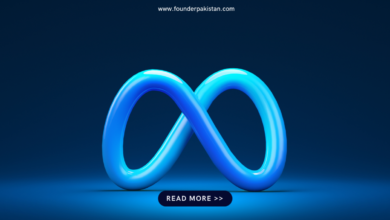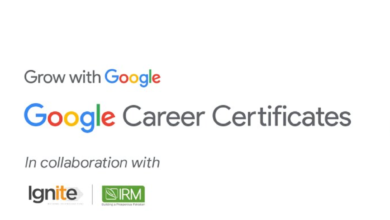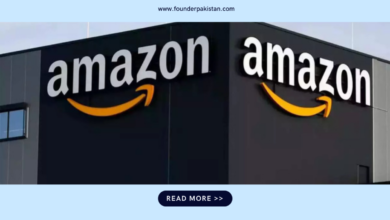Journal of Marketing study finds inverse relationship between social media following and engagement

Does a high follower count mean an influencer will generate engagement with sponsored content? Or are small influencers best for creating engagement? A new Journal of Marketing study finds that influencers with an intermediate follower count represent the engagement sweet spot. This finding mirrors the findings in the inaugural Influencer Industry Insights report by Walee, the largest creator economy platform in Pakistan.
With consumers growing increasingly wary of traditional advertising, influencer marketing is gaining traction on social media platforms such as Instagram. It has transformed from an ancillary tactic to a market worth more than $13 billion in 2021. Social media influencers are conspicuous in numerous online spaces, with follower counts ranging from a few thousand to many millions.
Many influencers create content that generates social media engagement, captured by the number of interactions with their followers (e.g., likes, comments), a highly relevant performance indicator that advertisers seek to optimize.
However, despite the growing popularity of influencer marketing, advertisers do not yet have a solid understanding of how engagement arises, such as which influencers are most effective at turning advertising budgets into a greater engagement. The main screening criterion is an influencer’s follower count, or indegree, which defines the size of the audience an influencer can directly reach.
High Followers or High Engagement?
Advertisers face a tricky choice. On the one hand, advertisers want to leverage an influencer’s reach, which is the number of followers exposed to an influencer’s content, and that, by definition, increases in indegree. On the other hand, users on social networks often seek interactive, communal relationships where they feel connected.
Influencers with larger indegree often lack sufficient resources or interest to enter into meaningful, frequent interactions with their millions of followers. Some advertisers have identified this issue, cautioning that high-indegree influencers might not be able to create significant engagement and suggesting more reliance on influencers who are not as popular.
In “Finding Goldilocks Influencers: How Follower Count Drives Social Media Engagement,” researchers Simone Wies of the Goethe University Frankfurt, Alexander Bleier of the Frankfurt School of Finance & Management, and Alexander Edeling of the KU Leuven, reconciled these views across a multimethod study based on Instagram data.
This unique data set includes more than 1,700 influencers across over 800 campaigns, capturing all posts and stories and publicly visible and privately accessible engagement metrics. The researchers augment a field study with two types of experimental studies (eye-tracking and online laboratory), an add-on simulation study, and an auxiliary set of qualitative interviews.
The researchers found that the overall engagement between influencers and followers improves at low to moderate follower count levels. As the follower count rises, the positive effect becomes increasingly outweighed by the negative engagement likelihood effect caused by low perceived tie strength, leaving followers less motivated to engage with the influencer’s content and reducing engagement. In short, the relationship between an influencer’s follower count and engagement follows an inverted U-shape.
Content Customization and Sponsored Posts
The research also shows that higher content customization weakens the effect of influencer indegree on engagement. This leads to small and large indegree influencers becoming more effective at generating engagement than medium-sized indegree influencers. Similarly, when an unknown brand sponsors the campaign, the effect of influencer indegree on engagement is less pronounced. As this relationship flattens, medium-sized indegree influencers become less effective at driving engagement.
The work contributes to marketing research and practice in several important ways. The researchers deepen insights into the relationship between an influencer’s indegree and followers’ engagement with sponsored content. The researchers also introduce two important campaign properties—content customization and brand familiarity—as relevant concepts to the influencer marketing literature that condition how influencer indegree drives engagement.
The researchers provide novel, actionable insights to help advertisers improve their influencer marketing strategies. The researchers highlight the peril of supersaturation effects on engagement when the follower count becomes too large. The researchers show that the most effective follower count level is between the often-recommended very small and very large influencer tiers.
At the same time, advertisers and influencers also have room to maneuver: Brands that allow influencers to promote content independently and brands that are less known to observe a weaker inverted U-shaped relationship between follower count and engagement, reducing the pressure for them to collaborate with medium-sized influencers who have an optimal number of followers.
The researchers’ results offer the following advice for advertising managers:
- Brands should empower influencers with a large following to create original content in their style instead of repeating the brand’s official communications.
- To maximize engagement, well-known, mainstream brands should contract with influencers with neither too few nor too many followers.
- Influencers with large follower counts might consider expanding their partnerships with lesser-known brands to enjoy mutual benefits.
To learn more, read “Finding Goldilocks Influencers: How Follower Count Drives Social Media Engagement” in the latest Journal of Marketing issue under SAGE Journals.




